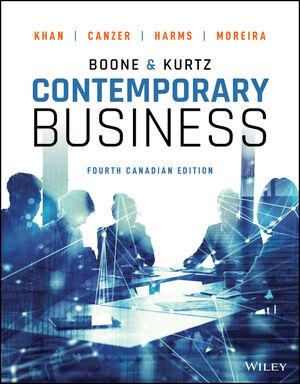Question
Few elements of personal finance arouse such strong feelings as payday lenders. Although it seems that payday lending has always been around, it only emerged
Few elements of personal finance arouse such strong feelings as payday lenders. Although it seems that payday lending has always been around, it only emerged about twenty years ago when simple check-cashing stores evolved into lenders. According to a 2012 study by the Pew Charitable Trust, roughly 12 million Americans take out payday loans each year. The research findings indicate that "on average, a borrower takes out eight loans of $375 each per year and spends $520 on interest."
As recent federal legislation regarding the consumer finance industry has limited the fees banks can collect from credit and debit cards, a surprising and unintended effect emerged—several mainstream banks began offering bank deposit advance loans. Such loans are short-term loans with high fees and are in many ways very similar to payday loans. Wells Fargo and US Bank both offer bank deposit advance loans, which are secured by a direct deposit into a bank account. A bank customer who receives a regular direct deposit, for example from an employer or Social Security, and take out a cash advance of up to $500 against an upcoming regular deposit. No application or meeting with a personal banker is required. US Bank charges a cash-advance fee of $2 per every $20 borrowed; Wells Fargo charges $1.50 per $20 borrowed. For a $100 loan paid back in ten days, the annual interest rate is 365%.
Even though mainstream banks are entering the short-term loan business, there is still a great deal of controversy around payday lending as a practice. Those who believe payday lenders should be allowed to participate in the financial industry cite these arguments, among others:
•Access to credit during the economic downturn has been difficult even for those with high credit scores. For the unbanked or underbanked, it may be nonexistent. Payday loans offer access to short-term credit—albeit at a price—that some consumers may not otherwise have. According to Tom Lehman, professor of economics and Indiana Wesleyan University, "Banning payday lending actually does more harm than good by restricting credit options for households with no other recourse for loans."
•Not all consumers have the same needs and wants, so the individual consumer should have the right to make a choice from available options on the market. This is essentially a free-market argument that rests on the relationship of supply and demand. If consumers demand short-term loans, even at outrageous costs, they should be able to purchase them.
•Short-term payday loans may actually be lower in overall cost when compared to other options. Justin Davis, a payday lender in Kansas City, charges 17% interest for a two-week loan. In an interview with Jeremy Hobson of Marketplace, Davis contended that his service is an economically viable option for people facing compounding overdraft charges from their bank or having their utilities cut off or their car repossessed.
•Payday and direct deposit loans are not meant to be long-term credit solutions. They are meant to be short-term financial tools for individuals who face an unexpected expense or emergency and do not have the funds set aside to pay for it. According to Nicole Garrison-Sprenger of US Bank, that sort of financial instrument "is a safety net for customers who have no other way to pay for unexpected expenses such as a medical emergency or an auto repair."
Critics, however, do not find any of those arguments compelling. Instead they cite the following points:
•According to research by the Pew Charitable Trust, the average payday loan requires a repayment of more than $400 in two weeks, yet the average payday borrower can only afford to repay $50 in that time frame. The debt keeps rolling forward.
•Short-term loans are easy to secure and extremely difficult to get rid of. Unless borrowers contact the lender several days in advance regarding the full payment of the loan, the lender can automatically renew the loan—and continue charging interest.
•The lender can connect to a borrower's bank account and request payments. If the borrower's account has insufficient funds, then the borrower accrues overdraft charges from the bank. In the case of Ivy Brodsky, Chase Bank processed requests from six online payday lenders who tried 55 times to get payment out of her closed account. Chase charged Ms. Brodsky $1,523 in overdraft fees.
•There is no universal charter for payday lenders, so laws regarding the legality of the loans vary from state to state. Residents of states where payday lending is illegal are still able to secure short-term loans from online lenders with a base of operation in another state or offshore.
The costs to society, opponents argue, are high. Darryl Dahlheimer, the program director at Lutheran Social Service Financial Counseling, argues, "This product is a debt trap. That's it. It's designed for profit and we see the pain it offers."
You Decide:
•Should the government ban short-term loans in all forms? If not, should these loans be subject to additional regulation? Explain.
•Under what, if any, circumstances could you justify taking out a payday loan? Can you envision a way in which you could use a short-term loan without getting into a cycle of debt? If you could never justify using a cash-advance or short-term loan, what plan will you put in place to handle unexpected financial needs or emergencies?
Step by Step Solution
3.33 Rating (162 Votes )
There are 3 Steps involved in it
Step: 1
Whether the government should ban shortterm loans in all forms or subject them to additional regulation is a complex and debated topic Here are argume...
Get Instant Access to Expert-Tailored Solutions
See step-by-step solutions with expert insights and AI powered tools for academic success
Step: 2

Step: 3

Ace Your Homework with AI
Get the answers you need in no time with our AI-driven, step-by-step assistance
Get Started


